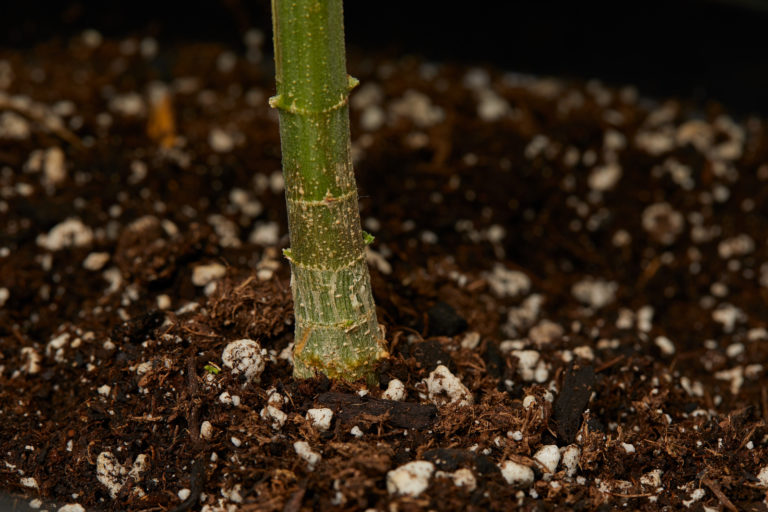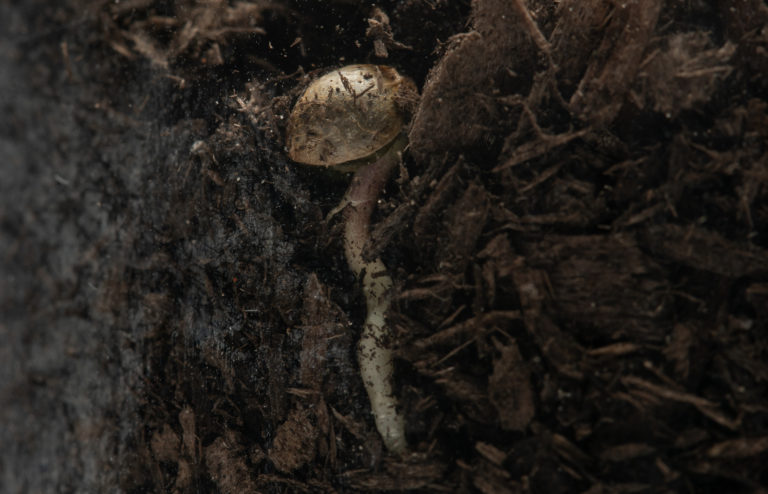Korean natural farming (KNF) espouses a truly natural, sustainable system for discerning cannabis growers. The KNF approach is based on developing soil that is functional and rich in microorganisms to strengthen all phases of plant growth.
KNF encourages the grower to get up close and personal with the soil by creating natural inputs from local materials. If you're already fascinated by organic growing, permaculture principles, or the notion of living soil, Korean natural farming may be an approach that resonates with you.
What is Korean natural farming?
Korean natural farming (KNF) is a unique farming method grounded in principles of sustainability. “KNF is a method that utilizes the natural ecosystem and the indigenous microorganisms that exist within to produce healthy, fertile soil to increase agricultural yield and quality, thus eliminating the need for harmful pesticides,” says Nishant Reddy, CEO of A Golden State, an artisanal cannabis brand rooted in sustainability.
 Photo by: Gina Coleman/Weedmaps
Photo by: Gina Coleman/WeedmapsImage lightbox

The KNF approach was developed by Master Han Kyu Cho of the Janong Natural Farming Institute in South Korea. Its philosophy and rationale are rooted in generations of practical farming knowledge collated from Japan, China, and Korea. Cho developed the KNF methods in the sixties after working the land and studying agriculture in Japan for three years. The KNF system can be applied to livestock and crops, including cannabis.
The central principle of KNF is to optimize crop yields by supporting fertile, healthy soil, which nurtures plant development. Techniques that promote the growth of naturally-occurring indigenous microorganisms (IMO) in the soil are the backbone of KNF. These microorganisms helpfully produce nutrients to feed the cannabis crop.
Inputs are central to achieving this indigenous microorganism growth. Those who adopt Korean natural farming methods create inputs for their soil, many of which are fermented. Fortunately, the inputs can be easily made from local materials and cost a fraction of conventional soil amendments such as composts and fertilizers.
“In traditional farming, it's common to see farms try to isolate themselves from the natural environment and force their own foreign ecosystem, rather than developing a symbiotic relationship with their surroundings and harnessing the already present beneficial bacteria and fungi,” explains Reddy. “The KNF process not only produces healthy, high-yielding crops, but also improves soil health and structure, as well as attracting earthworms, eliminating harmful agricultural chemicals, and contaminated water run-off.”
In other words, Korean Natural Farming represents a genuinely organic, sustainable approach to cannabis cultivation.
What are the pros of this method?
Like all cannabis cultivation techniques, KNF comes with its own advantages and drawbacks.
“The good news is that the pros for Korean Natural Farming far outweigh the cons at a non-commercial level,” points out Robert Masterson, chief of cultivation at A Golden State.
“Some of the most important pros are that KNF is sustainable, environmentally friendly, avoids harmful pesticides, herbicides, and contaminated water, improves the natural soil, offers higher yields and healthier crops, and most importantly, it connects the farmer with the natural environment.”
Cannabis cultivators, like all crop growers, must be vigilant in protecting their crops against pests, fungi, and poor health. “Many of these issues are attributed to a poor ecosystem, and thus farmers try and resolve this by using harmful chemicals,” explains Masterson.
“Korean Natural Farming addresses and solves these by having a farmer produce their own nutrients using what is naturally occurring in their surrounding environment.”
According to Masterson, nutrient-rich inputs sourced from the surrounding environment promote healthier and more robust plants. Happily, they also eliminate pests and diseases that are caused by a lack of nutritional elements.
Benefits for soil
One of the most distinctive benefits of KNF is the maintenance of both the soil and the microbes in it. Soil health is critical to crop growth as it regulates the degradation of organic material and nutrient adsorption. More specifically, microbes that live in soil can degrade foreign substances, hold carbon, and even protect against crop diseases.

Image lightbox

Microbial diversity tends to be more prolific in organically farmed soils than those that use conventional cultivation methods. Cannabis cultivation systems that rely on chemicals or fertilizers can contribute to soil degradation. Caring for the soil, on the other hand, ensures the soil cares for your plants.
A 2019 study published in Sustainability found that natural farming improved the physical, chemical, and biological properties of soil and enriched the microbial community over seven years. Conventional cultivation, in comparison, led to an increased number of plant diseases.
Self-sufficient and sustainable
Korean natural farming is a method that encourages self-sufficiency, reducing reliance on external inputs such as inorganic pesticides and fertilizers. In many cases, growers can obtain the materials and equipment needed to support IMO directly from their land or source them locally, helping to reduce the carbon footprint of the grow.
KNF is ideal for growers who are dedicated to self-sufficiency, or what is known as a closed-loop system. This approach means you don't run to the store every time you need a supplement for their crop; rather, you create the supplement from what's available. In exchange, KNF requires a relatively labor-intensive process of creating inputs to support soil and plant growth.
What are the cons of Korean natural farming?
As is true of many sustainable cultivation methods, KNF demands care, attention, and labor. These aren't necessarily drawbacks, but they do require a time investment. In Korean natural farming, the bulk of the work lies in learning about the inputs and then creating them. The level of detail required renders the process easier for small-scale cannabis growers rather than commercial cultivators.
“The cons revolve primarily around the learning curve to become proficient,” says Masterson. “It takes longer, is messier, and because chemicals that would otherwise make the job way easier are not being used, there is a greater necessity for attention to detail.”
How can home growers incorporate this method?
If the principles of KNF resonate with you, there are diverse ways you can incorporate the method into your growing regimen. It's vital to point out that KNF is an incredibly sophisticated system — entire books and courses have been written detailing its intricacies and core precepts. Much of its complexity rests on the sheer quantity of organic, home-made inputs designed to meet different growing needs.
That being said, you can approach this method on your own terms and experiment with some of its more fundamental elements.
“Home growers can easily start implementing elements of Korean Natural Farming into their everyday practices,” says Reddy. “It can be a phased approach with potentially the ultimate goal of being fully sustainable.”
Reddy also recommends using soil that hasn't been previously farmed if possible, as it will be plentiful with indigenous microbes. “The key is not to be intimidated by the learning curve and approach Korean Natural Farming in baby steps, with the focus being on all of the positive benefits,” he states.
KNF differentiates three essential phases of growth, each requiring unique balances of nutrients. Two of these phases are relevant to cannabis cultivation: the growth or vegetative phase and the flowering phase.
The growth phase
During the growth phase, cannabis requires nitrogen to extend its roots, branches, and foliage. One recommended input to support this phase is fish amino acids.
For the fish amino acid input, pieces of fish are cut up and placed into a bucket. Brown sugar is added at a 1:1 ratio by volume, along with some local fruit. The bucket is filled two-thirds of the way to allow fermentation to take place. The top is then covered with a permeable material and left to sit for 3 to 6 months. When it's ready to use, the mixture will take on a sweetish smell and be pale brown. The liquid is then strained and diluted with rainwater at a ratio of 1:500. The input can be applied to young cannabis plants as a foliar feed in the early stages of vegetative growth.
The flowering phase
Fermented plant juice is often used when the plant requires calcium and phosphorus during the flowering phase. Fermented plant juice is one of the most simple KNF fertilizers for this phase and is derived from sugar and locally-sourced plants.
To create fermented plant juice, find vigorous, fast-growing, healthy plants in your local area. Harvest them, and cut them into small pieces. Weigh the plants and then measure out an equal quantity of brown sugar. Coat the plant material with as much of the sugar as possible to expedite the fermentation process. Pack both leaves and sugar into a clean plastic or glass container, covering the top with a breathable lid. After seven days, the process should be complete, and the liquid can be strained off. The fermented plant juice should be diluted at a ratio of 1:500 and can be added as a root drench or applied as a spray.

